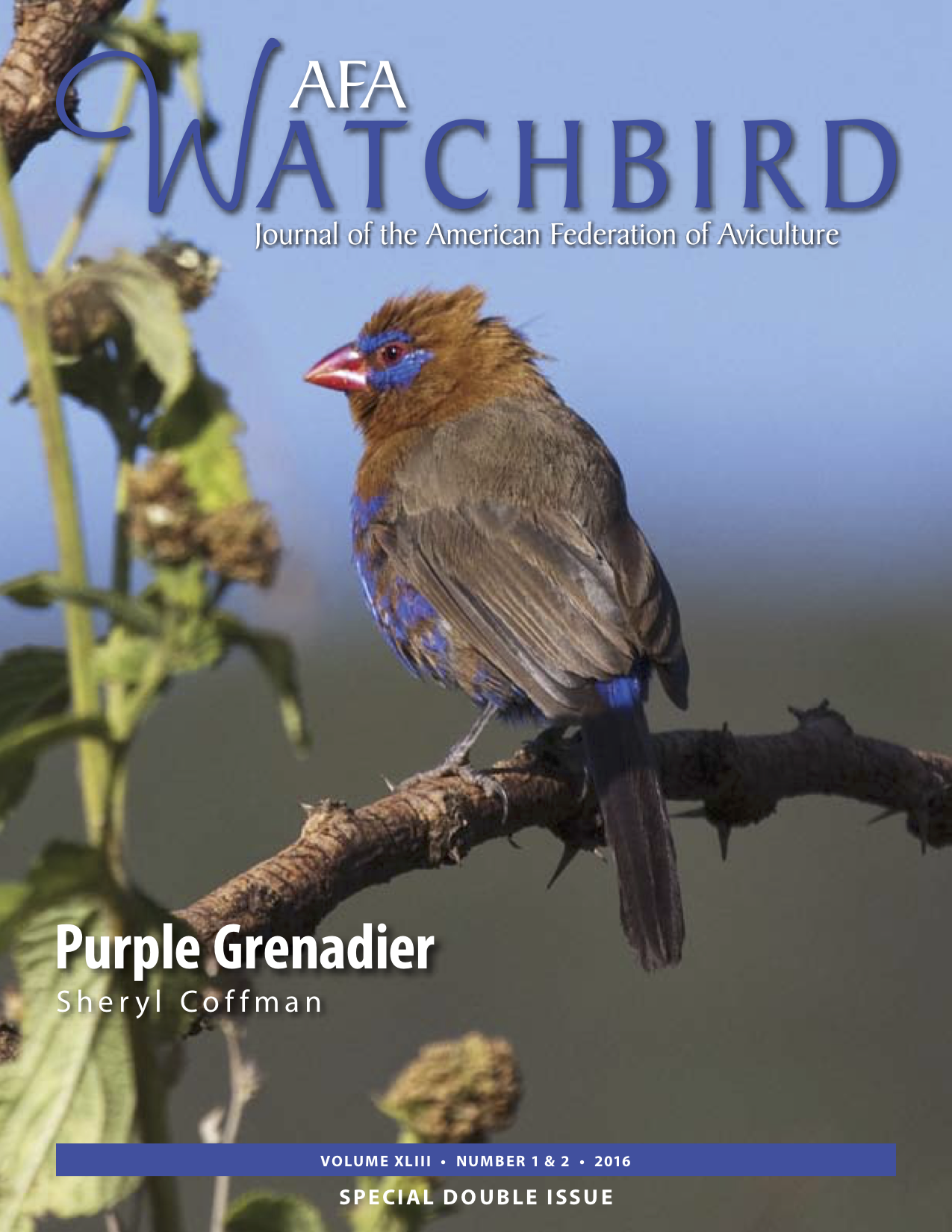Abstract
Unbelievable colors, so inquisitive and a cheerful song, the Purple Grenadier (Ureaginthus ianthinogaster) is a common species of Estrildid finch found in eastern Africa. The length averages 13.3 cm (5.25 in). The males have a vivid purple mask on their face and rich royal purple down their chest to their legs, their head, neck and body, a deep chestnut with a bright red beak and bright red feathers surrounding the eye.
The female is smaller with a grey stripe down a red beak when mature. The body is mostly cinnamon brown with pale lavender almost white, barring on the underparts and silver-blue eyepatches. All ages and sexes have a black tail and a blue violet patch above their tail. Juveniles are mostly a mixture of cinnamon-brown with a blue violet rump and a reddish-brown bill.
I keep my birds in indoor flights of various sizes, 8 feet long, 6 feet high and 4 feet wide is the largest and 4 foot long 4 foot wide and 6 foot high the smallest. I have a great deal of natural light with lots of windows and a few skylights. I suspend small full speculum lights in each flight. I keep a great deal of cover, some live plants ,lots of plastic and silk plants and bundles of dried grasses and branches my birds sometimes nest in what were live trees.
The temperatures of the bird room vary from 100 degrees in the summer to 45 degrees in the winter and the humidity is usually in the mid-range however if it’s warm I spray the live plants which brings the humidity up quite high for a couple of days.
Purple Grenadiers are very territorial. They will fight with any bird with blue coloring. So only one pair to a flight and they should be placed as far apart from each other as possible If they are too close they will spend most of their time pasted on the wire, challenging their rivals.
My males start singing and building in December and it is chilly in my bird rooms, down to 50 at night. Males do most of the work on building the nest, they prefer, enclosed wicker baskets but if there isn’t something like they will build their own in the highest jumble of brush. Into these they add dried grass, coco fiber and lots of white feathers filling the entrance.
Both the male and female care for the eggs in the nest, but the hen sits 80% of the time and the male usually sits away from the nest on guard duty ready to cry out a warning and distract you from their nest. You can see the hen’s beak peeking out from the entrance of white feathers while he is flying around with a very distinct warning. There will be between 3 and 5 eggs in the nest and will hatch in 13 days. Both parents get busy then and can both be seen at the food bowls.
In the wild Grenadiers rely upon termites and other small insects to feed their young. Termites are quite abundant in east Africa, but not easy to find in my bird room. I feed small and tiny mealworms in a dish in the morning I also keep a container...

